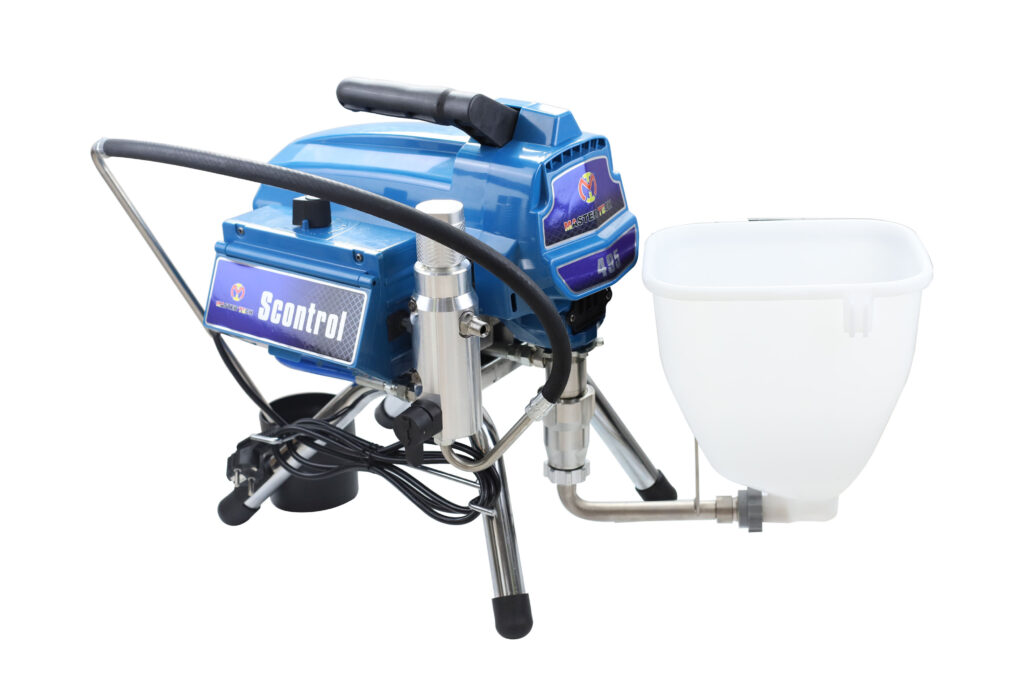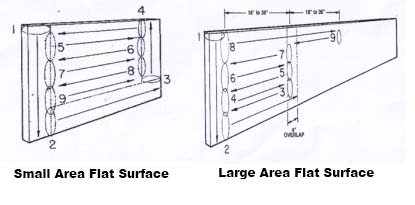An airless paint sprayer is an efficient tool for wall painting, capable of quickly and evenly applying paint, saving time and labor. Proper use of an airless paint sprayer not only improves construction efficiency but also ensures the quality of the spray effect. Here are the steps and precautions for using an airless paint sprayer for wall painting.

I. Preparations
Choose the Right Sprayer and Nozzle:
- Choose a suitable sprayer based on the size of the wall and the nature of the paint. For example, you might consider a China airless paint sprayer for cost-effective options.
- Select an appropriate nozzle size according to the paint’s viscosity. Generally, for wall paints, a nozzle size of 0.017-0.021 inches is suitable.
Prepare the Paint:
- Stir the paint thoroughly to ensure there are no lumps or sediment.
- Dilute the paint if necessary, following the manufacturer’s recommendations.
Protection Work:
- Use plastic sheeting and masking tape to protect areas that do not need painting, such as floors, windows, and doors.
- Wear necessary protective gear, such as goggles, masks, and gloves.
II. Operating Steps
Equipment Inspection and Adjustment:
- Check all connections on the sprayer to ensure they are tight and there are no leaks.
- Adjust the spray pressure. Typically, the pressure for wall painting ranges between 1500-3000 psi, depending on the actual situation.
Test Spray:
- Perform a test spray on scrap cardboard or a test wall to check the spray pattern and uniformity.
- Adjust the nozzle angle and distance to ensure even spraying without streaks.
Formal Spraying:
- Hold the nozzle perpendicular to the wall, keeping the nozzle about 12-18 inches (30-45 cm) away from the wall.
- Move the sprayer evenly, avoiding staying in one spot too long to prevent drips.
- Use overlapping spray strokes, overlapping each pass by about 50% to ensure even coverage.

III. Spraying Techniques
Spray Speed and Movement:
- Maintain a consistent spray speed and movement, avoiding spraying too quickly or too slowly.
- Avoid wrist movement to ensure a straight spray path.
Layered Spraying:
- If multiple coats are needed, allow sufficient drying time between coats, ensuring the previous layer is dry before applying the next.
Nozzle Cleaning and Maintenance:
- Clean the nozzle and sprayer immediately after use to prevent paint from drying and clogging the equipment.
- Regularly check for nozzle wear and replace heavily worn nozzles as needed. For replacements, consider Graco airless sprayer parts or China made Graco pump parts.
IV. Post-Spraying Treatment
Inspection and Touch-Up:
- After spraying, carefully inspect the wall and touch up any missed or uneven areas.
- Use a brush or small sprayer for detailed finishing to ensure an overall smooth finish.
Site Cleanup:
- Remove protective materials and clean the site to ensure a neat and tidy work area.
Equipment Maintenance:
- Thoroughly clean the sprayer and nozzle after completing the painting to prevent residual paint from affecting future use.
- Store the sprayer in a dry, ventilated place to avoid rusting. For maintenance and repair, consider using Graco pump repair parts or SCENTURY brand airless paint sprayers.

Conclusion
Proper use of an airless paint sprayer can significantly improve the efficiency and quality of wall painting. Pay attention to safety, follow the steps diligently, and ensure each step is done correctly. Through continuous practice and experience, you can master spraying techniques, achieving a perfect spray effect.
